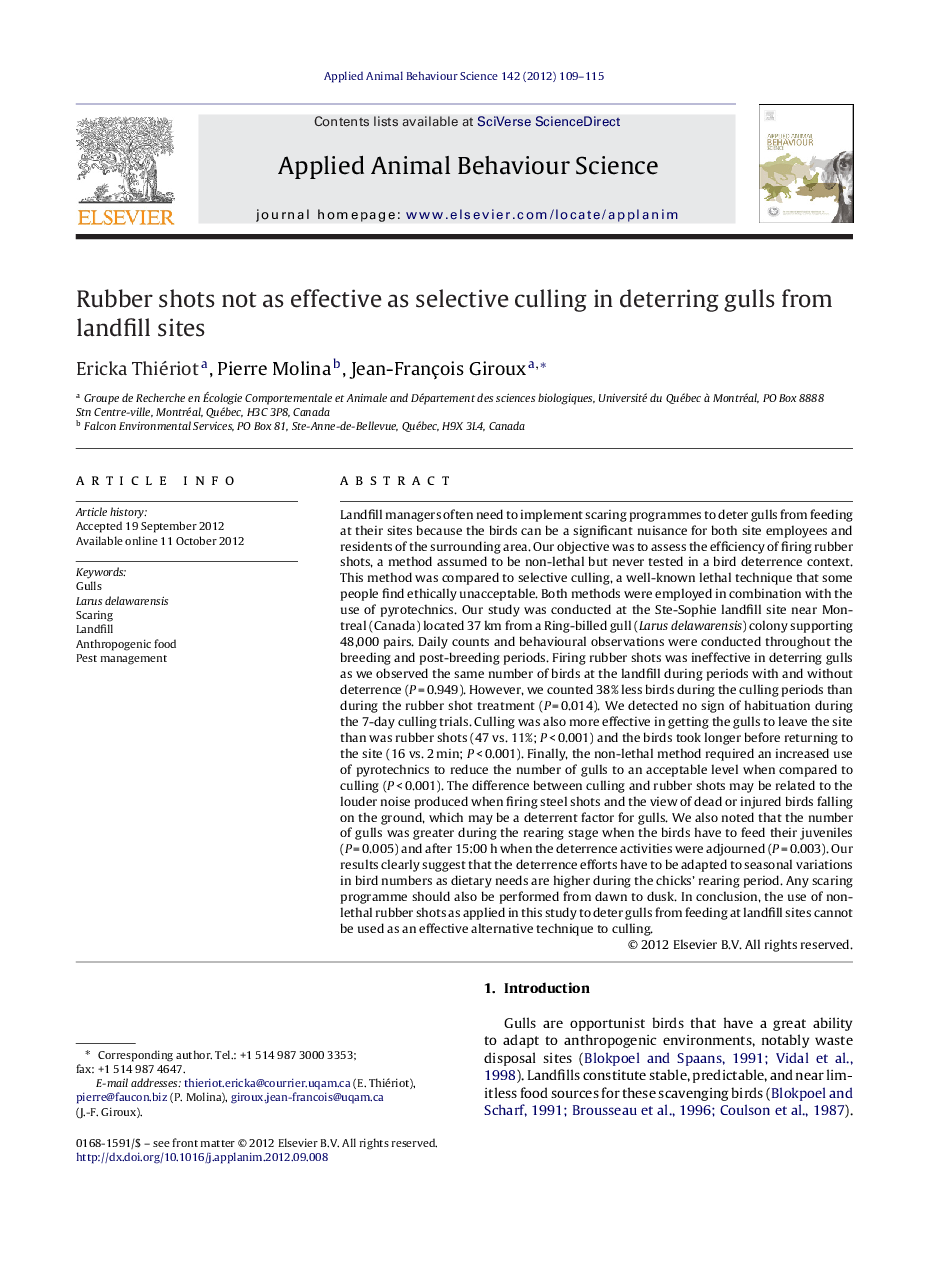| Article ID | Journal | Published Year | Pages | File Type |
|---|---|---|---|---|
| 4522875 | Applied Animal Behaviour Science | 2012 | 7 Pages |
Landfill managers often need to implement scaring programmes to deter gulls from feeding at their sites because the birds can be a significant nuisance for both site employees and residents of the surrounding area. Our objective was to assess the efficiency of firing rubber shots, a method assumed to be non-lethal but never tested in a bird deterrence context. This method was compared to selective culling, a well-known lethal technique that some people find ethically unacceptable. Both methods were employed in combination with the use of pyrotechnics. Our study was conducted at the Ste-Sophie landfill site near Montreal (Canada) located 37 km from a Ring-billed gull (Larus delawarensis) colony supporting 48,000 pairs. Daily counts and behavioural observations were conducted throughout the breeding and post-breeding periods. Firing rubber shots was ineffective in deterring gulls as we observed the same number of birds at the landfill during periods with and without deterrence (P = 0.949). However, we counted 38% less birds during the culling periods than during the rubber shot treatment (P = 0.014). We detected no sign of habituation during the 7-day culling trials. Culling was also more effective in getting the gulls to leave the site than was rubber shots (47 vs. 11%; P < 0.001) and the birds took longer before returning to the site (16 vs. 2 min; P < 0.001). Finally, the non-lethal method required an increased use of pyrotechnics to reduce the number of gulls to an acceptable level when compared to culling (P < 0.001). The difference between culling and rubber shots may be related to the louder noise produced when firing steel shots and the view of dead or injured birds falling on the ground, which may be a deterrent factor for gulls. We also noted that the number of gulls was greater during the rearing stage when the birds have to feed their juveniles (P = 0.005) and after 15:00 h when the deterrence activities were adjourned (P = 0.003). Our results clearly suggest that the deterrence efforts have to be adapted to seasonal variations in bird numbers as dietary needs are higher during the chicks’ rearing period. Any scaring programme should also be performed from dawn to dusk. In conclusion, the use of non-lethal rubber shots as applied in this study to deter gulls from feeding at landfill sites cannot be used as an effective alternative technique to culling.
